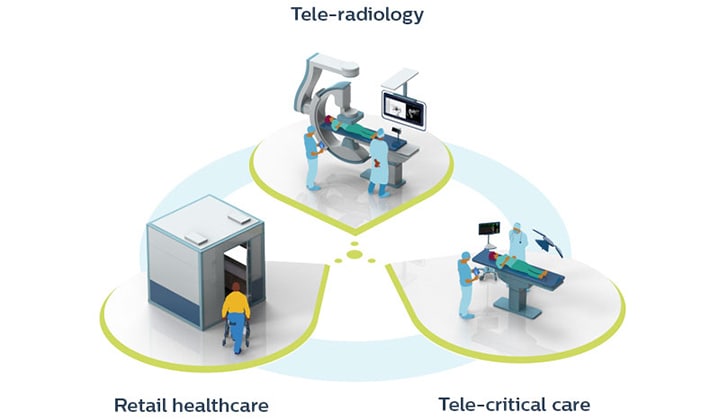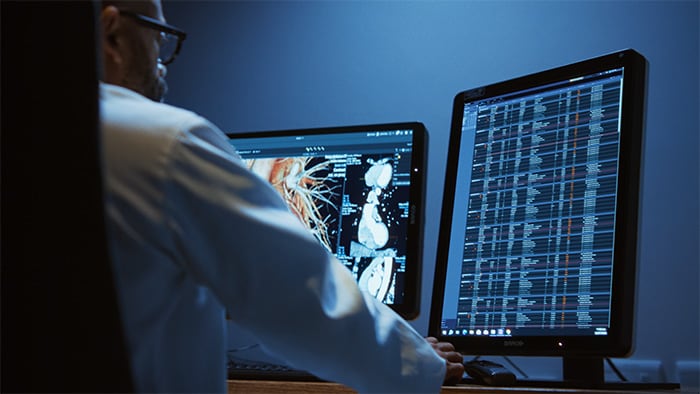How the ‘Healthcare-as-a-Service’ concept works as a business and care model
Aug 25, 2021 - Reading time 4-6 minutes
This article first appeared on Insider and was created by Insider Studios with Philips.
The future of healthcare has changed because of COVID-19. More than anything, the pandemic exposed the limitations of the present healthcare system to meet a sudden surge in demand. If we are to learn from the crisis, it will be imperative to reinvent and build a robust healthcare ecosystem for the future.
Healthcare systems have adapted to new methods of care delivery during the pandemic. These changes may only be sustainable through the continued exploration of collaborative partnerships with other players in the healthcare sector.

Imperatives for future success in healthcare
For healthcare leaders, preparing for a post-COVID-19 era begins with assessing how to meet the complex challenges across the care continuum. Certainly, telemedicine and digital health are set to be heavily featured in future care delivery. Broader access to virtual healthcare options is imperative. Other initiatives include the digitization of care, value-based care, ecosystem integration, and a “Healthcare-as-a-Service” (HaaS) model.
The HaaS concept, as jointly envisioned by Philips and VPS Healthcare, ensures an asset-light, operational-expense-driven system that allows patients to receive the care they need when they need it without exhausting health system resources. Given the post-pandemic receptiveness to new methods of care delivery and virtual care, healthcare leaders may seek increased opportunity to collaborate, pool resources, and explore more scalable business models such as HaaS.
"Learning from the present crises, we must reinvent and build a robust healthcare ecosystem that would cater to the needs of all the populations in the future," said Dr. Shamsheer Vayalil, the chairman and managing director of VPS Healthcare. "Healthcare-as-a-Service is an ideal model to be adopted, as it would armor the global infrastructure against any likely health threats, such as the present pandemic."
Imperatives for future success in healthcare
For healthcare leaders, preparing for a post-COVID-19 era begins with assessing how to meet the complex challenges across the care continuum. Certainly, telemedicine and digital health are set to be heavily featured in future care delivery. Broader access to virtual healthcare options is imperative. Other initiatives include the digitization of care, value-based care, ecosystem integration, and a “Healthcare-as-a-Service” (HaaS) model.
The HaaS concept, as jointly envisioned by Philips and VPS Healthcare, ensures an asset-light, operational-expense-driven system that allows patients to receive the care they need when they need it without exhausting health system resources. Given the post-pandemic receptiveness to new methods of care delivery and virtual care, healthcare leaders may seek increased opportunity to collaborate, pool resources, and explore more scalable business models such as HaaS.
"Learning from the present crises, we must reinvent and build a robust healthcare ecosystem that would cater to the needs of all the populations in the future," said Dr. Shamsheer Vayalil, the chairman and managing director of VPS Healthcare. "Healthcare-as-a-Service is an ideal model to be adopted, as it would armor the global infrastructure against any likely health threats, such as the present pandemic."
The HaaS opportunity ahead
Within a HaaS model, healthcare providers can purchase a wide array of services on a subscription basis. This allows providers to cost-effectively expand the accessibility of care in a dynamic, agile way and make incremental, consistent improvements tied to their business objectives and resources. Some of the key benefits include pay-per-use flexibility, improved patient experience and outcomes, and better staff workflow and satisfaction — all of which are important components of the Quadruple Aim to improve the patient and staff experience and outcomes, while lowering the cost of care.
HaaS could have applications in regions across the globe since it allows multiple partners to co-develop solutions and services for greater efficiencies. For example, with its unique position between Africa, India, and Asia, the United Arab Emirates is perfectly placed to be a strategic hub for HaaS solutions. But the concept can also be applied to other markets or regions to ensure that healthcare systems are ready for future crises, unpredictable shifts in demand, or sudden and unexpected obstacles and disruptions to care delivery.
3 examples of working HaaS applications
Tele-critical care
Designed to be highly collaborative, tele-critical care solutions offer providers centralized, remote clinical surveillance by skilled professionals. It’s like having an “extra set of eyes” on patients’ vitals. These solutions can offer clinical expertise and proprietary algorithms that provide early warnings for proactive care and continuous programmatic improvement. This centralized collaborative model helps expand access to specialized care in remote locations and transforms the cost-to-care equation.
Tele-radiology
Already widely used, tele-radiology allows images to be obtained in one location and then transmitted over distances and viewed remotely for diagnostic reading or consultation purposes, including guidance on the next steps in the care process. For instance, the Philips Radiology Operations Command Center solution takes advantage of this accessibility by providing a multi-modality platform that works across multiple imaging sites, enabling an efficient “hub and spoke” model for imaging. It enables care teams to collaborate throughout the enterprise and imaging networks to stretch their expert talent in their main centers, making it available across all their sites.
Retail healthcare
Since COVID-19 has accelerated telehealth and virtual care outside of the hospital, the introduction of small kiosks or wellness pods in retail locations connected to larger hubs could increase access and expand coverage. The pods could provide a convenient way to deliver a wide range of non-acute health services, including in-person, virtual, and preventative care services. Key enablers for this approach include wearable sensor technology combined with predictive analytics, digitization, and interoperable systems facilitating data sharing across the continuum of care.
VPS Healthcare is already exploring this concept of “retail healthcare” with some wellness kiosks in shopping malls in the UAE. And, Philips Virtual Care Station, part of the United States Veterans Affairs ATLAS (Advancing Telehealth through Local Access Stations) program, is a potential community-based telehealth solution for further development.

New methods of care delivery with a scalable business model
"The post-pandemic receptiveness to new ways of working represents an opportunity for various organizations to pool resources and expertise," said Vincenzo Ventricelli, the CEO of Philips Middle East, Turkey, and Africa. "Together with VPS Healthcare, we are looking at Healthcare-as-a-Service as the way forward. Different players in the healthcare ecosystem can work together to effectively deliver healthcare on demand."
Learn more about the 'Healthcare-as-a-Service' concept and explore opportunities in the new landscape in our 'Above and Beyond: Reshaping Healthcare After COVID-19' whitepaper. Let us help you lead.









